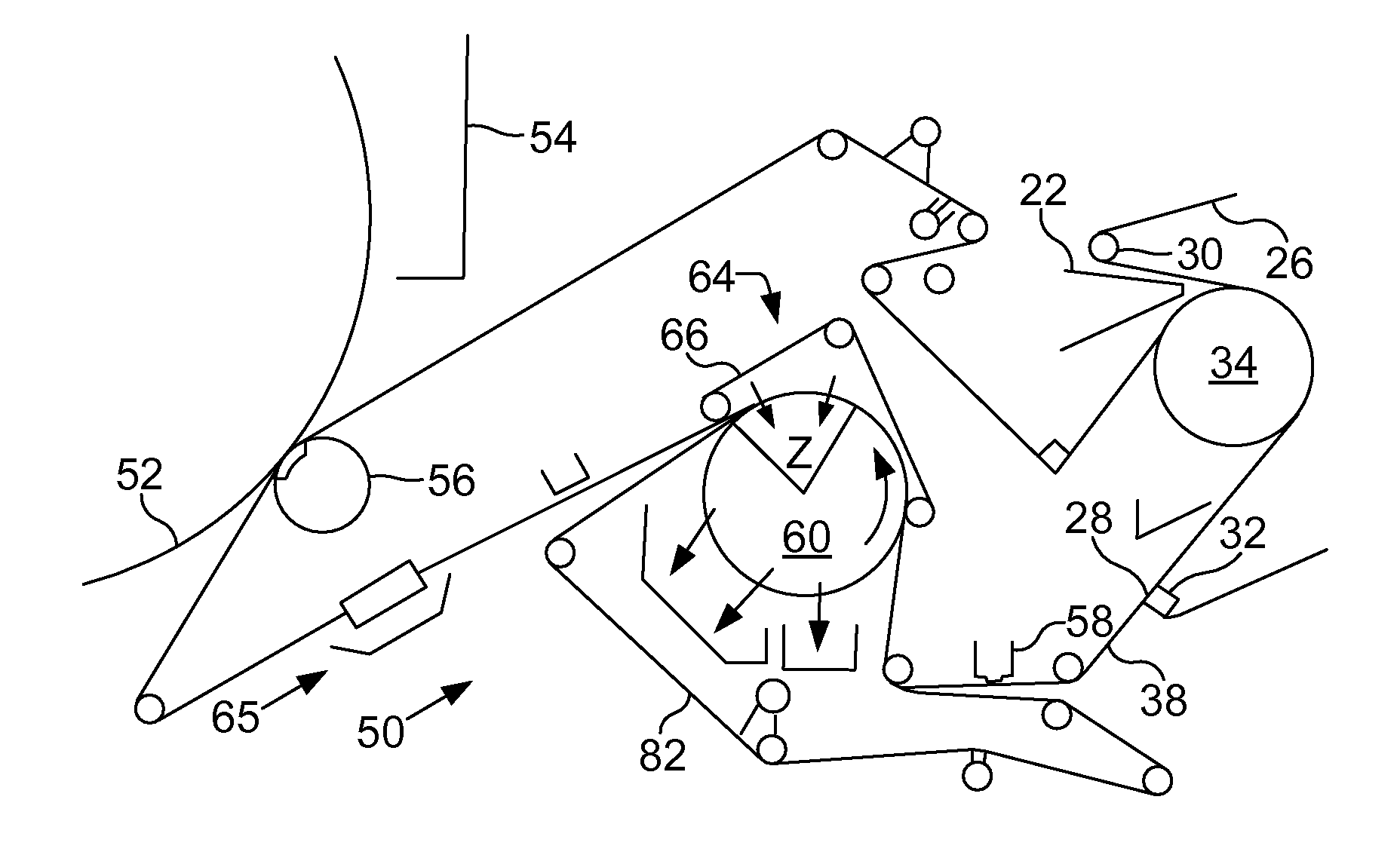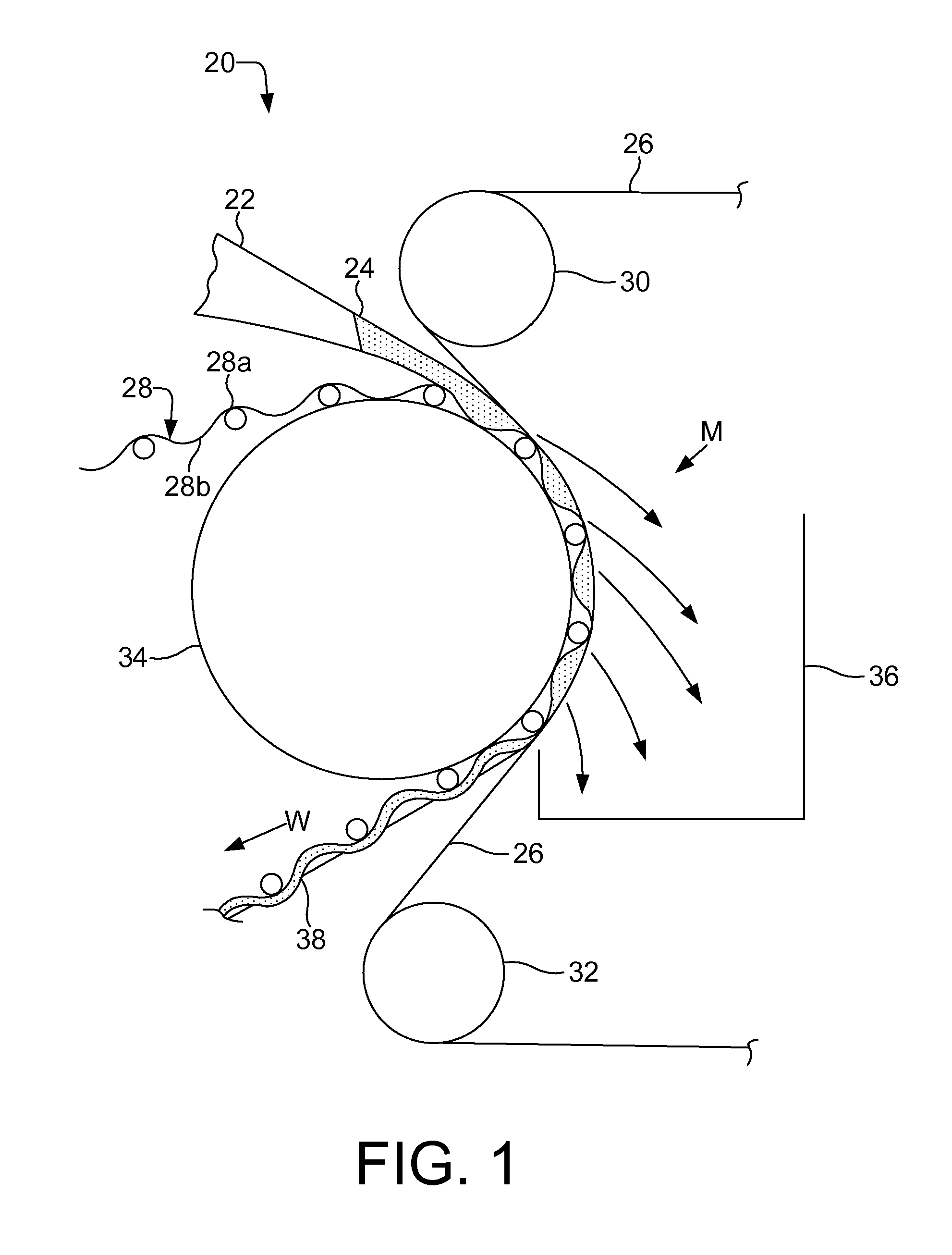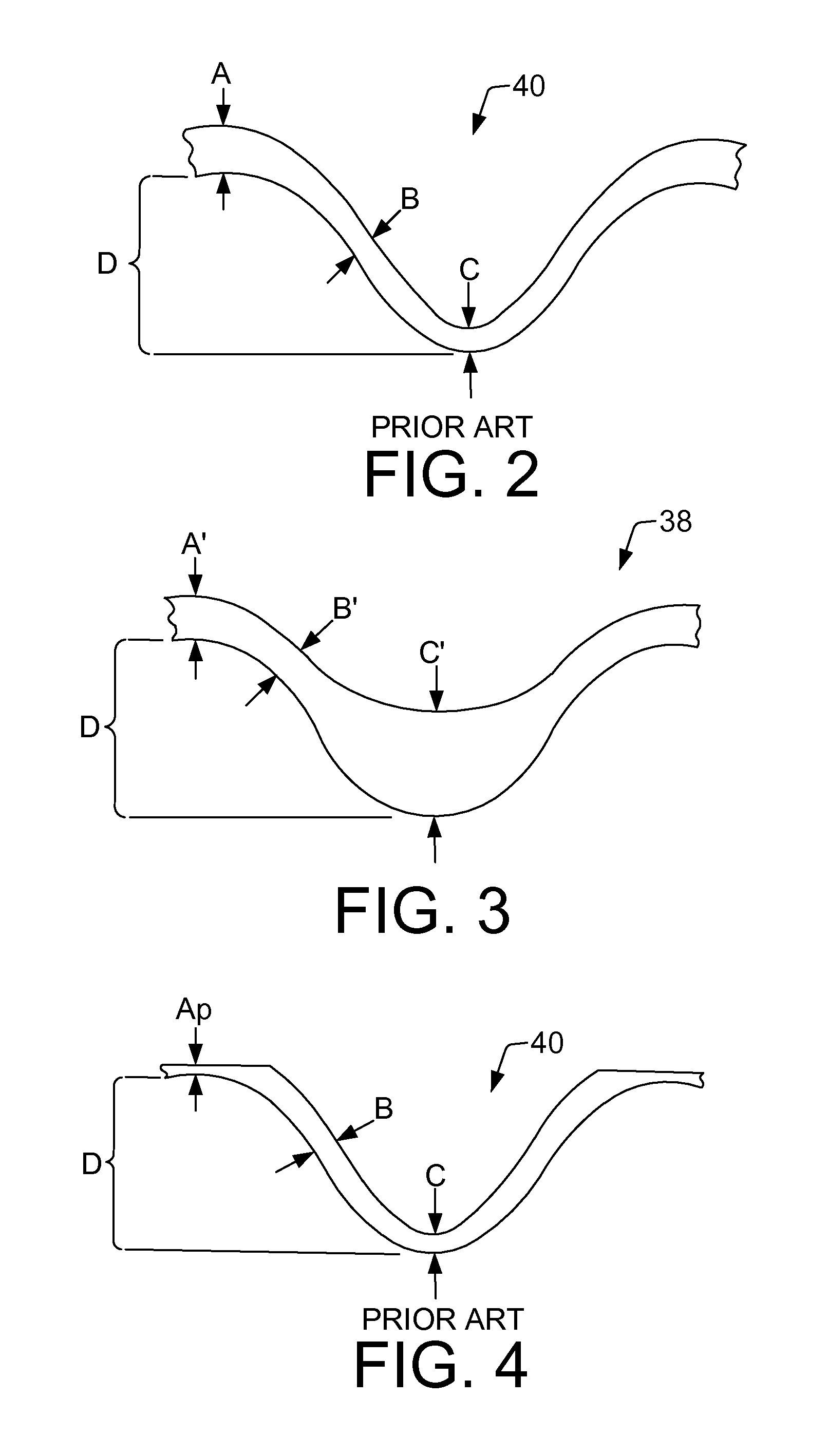Method of dewatering a fibrous web with a press belt
a press belt and fibrous web technology, applied in the press section, furniture, lighting and heating equipment, etc., can solve the problems of low density pillow area in the fibrous web, ineffective conventional wet pressing methods, and no gain in dryness, and achieve the effect of thin dewatering fabri
- Summary
- Abstract
- Description
- Claims
- Application Information
AI Technical Summary
Benefits of technology
Problems solved by technology
Method used
Image
Examples
Embodiment Construction
[0049]Referring now to the drawings, and more particularly to FIG. 1, there is a fibrous web machine 20 including a headbox 22 that discharges a fibrous slurry 24 between a forming fabric 26 and a structured fabric 28. Rolls 30 and 32 direct fabric 26 in such a manner that tension is applied thereto, against slurry 24 and structured fabric 28. Structured fabric 28 is supported by forming roll 34 which rotates with a surface speed that matches the speed of structured fabric 28 and forming fabric 26. Structured fabric 28 has peaks 28a and valleys 28b, which give a corresponding structure to web 38 formed thereon. Structured fabric 28 travels in direction W, and as moisture M is driven from fibrous slurry 24, structured fibrous web 38 takes form. Moisture M that leaves slurry 24 travels through forming fabric 26 and is collected in save-all 36.
[0050]Forming roll 34 may be solid or permeable. Moisture travels through forming fabric 26 but not through structured fabric 28. This advantage...
PUM
| Property | Measurement | Unit |
|---|---|---|
| thick | aaaaa | aaaaa |
| mean pore diameter | aaaaa | aaaaa |
| mean pore diameter | aaaaa | aaaaa |
Abstract
Description
Claims
Application Information
 Login to View More
Login to View More - R&D
- Intellectual Property
- Life Sciences
- Materials
- Tech Scout
- Unparalleled Data Quality
- Higher Quality Content
- 60% Fewer Hallucinations
Browse by: Latest US Patents, China's latest patents, Technical Efficacy Thesaurus, Application Domain, Technology Topic, Popular Technical Reports.
© 2025 PatSnap. All rights reserved.Legal|Privacy policy|Modern Slavery Act Transparency Statement|Sitemap|About US| Contact US: help@patsnap.com



